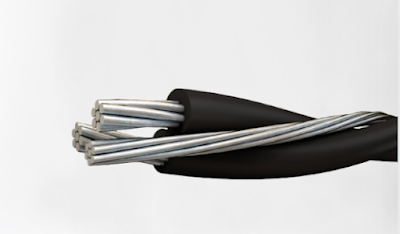What are the Different Configurations of 22kV Cable?
 |
| Different Configurations of 22kV Cable |
Introduction:
In the world of electrical power transmission and distribution, 22kV cable play a crucial role in delivering electricity safely and efficiently. These cables come in various configurations, each tailored to specific requirements and applications. Understanding the different configurations of 22kV cables is essential for selecting the right option for your project. In this comprehensive guide, we'll delve into the various configurations of 22kV cables, exploring their characteristics, applications, and benefits.
Different Configurations of 22kV Cable
Single-Core Cables:
Single-core 22kV cables consist of a single conductor surrounded by insulation and, in some cases, a metallic shield. They are commonly used for medium voltage power distribution in both underground and overhead installations. Single-core cables are preferred in situations where high fault currents are expected, as they offer better fault current handling capability compared to multi-core cables.\
Three-Core Cables:
Three-core 22kV cables comprise three conductors insulated from each other and enclosed within a common sheath or armor. These cables are widely used for underground power distribution networks, especially in urban areas where space constraints are a concern. The three-core configuration provides balanced load distribution and reduces the risk of electromagnetic interference.
Single-Wire Armored (SWA) Cables:
SWA cables feature a single conductor surrounded by insulation and armored with a layer of galvanized steel wires. This armored construction provides mechanical protection against physical damage, making SWA cables suitable for direct burial or installation in harsh environments. They are commonly used in industrial applications, outdoor installations, and areas with high levels of mechanical stress.
Multi-Wire Armored (MWA) Cables:
MWA cables consist of multiple conductors insulated from each other and collectively enclosed within a steel wire armor. These cables offer enhanced mechanical protection and are well-suited for applications requiring high reliability and durability. MWA cables are commonly used in power distribution networks, offshore installations, and utility substations.
Unarmored 22kV cables lack a protective armor layer and rely solely on the insulation for mechanical and environmental protection. While unarmored cables are more susceptible to damage from external factors, they are often more flexible and easier to install compared to armored cables. Unarmored cables are commonly used in indoor installations, low-risk environments, and temporary power setups.
Gas-Insulated Cables (GIS):
GIS cables utilize a gas (such as SF6) as the insulating medium instead of traditional solid or liquid insulation. This compact design allows for higher voltage ratings and reduced footprint, making GIS cables ideal for applications where space is limited, such as urban areas or congested substations. GIS cables offer excellent reliability and are resistant to environmental factors like moisture and pollution.
Oil-Insulated Cables:
Oil-insulated 22kV cables use mineral oil or synthetic oil as the dielectric medium for insulation. These cables are primarily used in high-voltage applications where traditional solid insulation may not be feasible. Oil-insulated cables offer excellent thermal performance and are suitable for long-distance power transmission. However, they require careful maintenance to prevent oil leakage and ensure operational safety.
Self-Contained Fluid-Filled (SCFF) Cables:
SCFF cables combine the advantages of oil-insulated and gas-insulated designs by using a self-contained fluid-filled system. The cable core is filled with a dielectric fluid (usually oil or silicone) under pressure, providing both insulation and cooling. SCFF cables are commonly used in underground and submarine applications where high reliability and compact design are crucial.
Cross-Linked Polyethylene (XLPE) Insulated Cables:
XLPE insulated cables feature insulation made of cross-linked polyethylene, which offers superior electrical and thermal properties compared to traditional materials. These cables are lightweight, flexible, and resistant to moisture, making them suitable for a wide range of applications. XLPE insulated cables are commonly used in power distribution networks, renewable energy systems, and industrial installations.
Conclusion:
The diverse configurations of 22kV cables offer engineers and designers a wide array of options to meet the specific requirements of various applications. Whether it's underground distribution networks, offshore installations, or industrial facilities, there's a suitable configuration of 22kV cable to ensure reliable and efficient power transmission. By understanding the characteristics and advantages of each configuration, stakeholders can make informed decisions when selecting 22kV cables for their projects, ultimately contributing to safer and more resilient electrical infrastructure.
Visit also: Advantages of Using Tinned Copper Conductors in Solar Cable
Visit also: Advantages of Using Tinned Copper Conductors in Solar Cable



Comments
Post a Comment